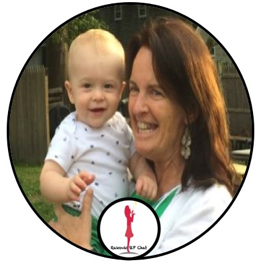Social skills, language pragmatic skills can be difficult to write goals for. If you think about the skills in the same way that you consider other language skills this might be a good first start. You need to make an analysis of what you want the student to do then you need to break down that skill into different skill sets. So for example in working on the social skill of greeting you need to make an analysis of what part of the greeting that the student is having difficulty with Do they not visually engage the listener? Where is their body in relationship to the person they want to speak to? Do they know what to say to the person? Are they giving the listener some time to respond to them? Is the child/adult able to greet anyone or is this a skill that is a particular need for a particular group?
Suppose what you want to do is to increase a student’s inferencing skills. This too is too broad. Look at the exact skill that you are wanting the student to be able to do and under what set of circumstances. So if you are displaying a picture and you are asking a student to make an inference from the picture. Your goal might be ” In six weeks student will be able to interpret visual information presented in a picture and be able to make a logical answer to a simple question why question with 80% accuracy”. Then you would look at the skills that the child can do. Can the child tell you what is happening in the picture? Does the child recognize that why questions usually have in the answer these key words ( because, for, so, to)? If they don’t, then have a card that has the word why on it on one side and the words ( because, for, so, to) on the other so when you ask the ‘why’ question you can can flip the card over to give the child the key words to say in their answer. If this seems very difficult for the child then begin the process with having the child respond to something that is happening in the present ( child yawning, you ask ” Why are yawning? and display the because card etc.) If the child can do this then you can ask them about something that happened in the past ” Why did you miss school yesterday?” You can then again display the ‘why’ and ‘because’ card. If the child has difficulty answering you could give choices such as ” Were you absent because you were sick or because you were on vacat ion?” When the child is able to do this try other type of ‘why’ questions such as ” Why do we use an umbrella?” starting with some very concrete questions and advancing to more complex questions ” Why did Goldilocks go into the Three Bears home?
Something you need to consider is that when you inference you are taking the information that is being presented to you as well as your past knowledge to make an inference. The other thing to consider is their ‘theory of mind’ abilities. Can they ‘read’ the character. If they are having difficulty with this you need to begin again with something very concrete in which the reason is very obvious.
What is happening in this picture? Why is the girl’s face dirty ? How do you think she is feeling? Then begin to advance to more sublte cues and pictures.
When you read a story talk about the character’s feeling and motivations to help build theory of mind skills and enhance listening and reading comprehension. Understanding a character’s personality assists in being able to make predictions and inferences about what might happen in a story.
Here are some great references for social language skills:
- National Association of Special Education Teachers
National Association of Special Education Teachers
- Jill Kuzma’s webpage
IEP/Treatment Plan Objective Ideas
- Rhode Island Technical Assistance Project
- Michelle Garcia Winner
Michelle Garcia Winner website





read, thank you!
Thanks! Read!
Very helpful resources, thank you for sharing!
Doing a lot of this during this semester under your guidance. Thanks!
Thank you! This breakdown is very helpful.
Very helpful and seems can also be key in helping a child learn perspective taking starting simple focusing on why questions that are related to them and then gradually move toward why questions that are about other people. I like how you explain the process of where to begin to make sure that the child is understanding basic concepts before moving to complex concepts.
Read, Thank you!
Thank you! This is a huge help for me!